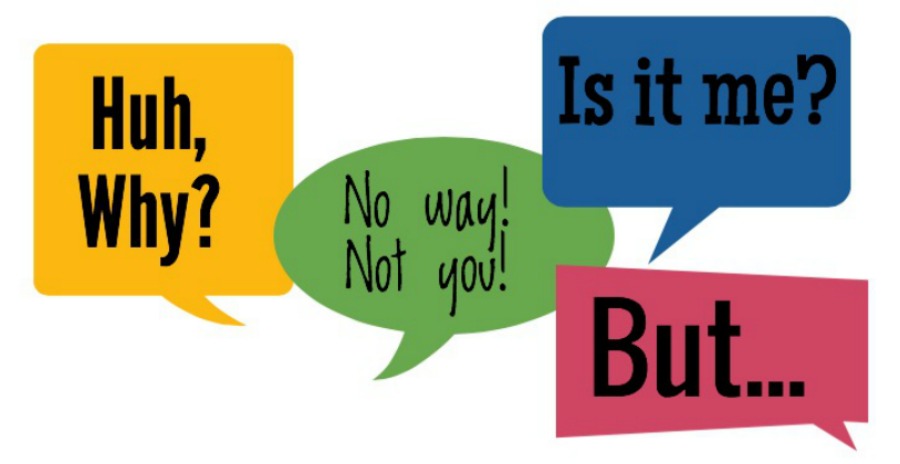 You built your website to attract visitors and generate leads, but not everyone will go through your marketing funnel and become a customer. Visitors may leave your website on every stage of the shopping process from research to check-out. Why does this happens?
You built your website to attract visitors and generate leads, but not everyone will go through your marketing funnel and become a customer. Visitors may leave your website on every stage of the shopping process from research to check-out. Why does this happens?
7 Reasons You Customers Are Leaving Your Site
1. Your website is irrelevant to their query
It’s not uncommon that visitors immediately bounce off your website as soon as they take a glance at it, without clicking through to see more pages. When this happens, it usually indicates a gap between the link description and your website’s content.
If a person is coming from the organic search, they probably relied on a description snippet that contained the keywords they typed, but as it turned out, your website didn’t answer their question. Most of the time it’s not your fault – a person could be using vague search terms that brought up irrelevant search results.
 What you can do: optimize your website for all the right keywords and make sure the context is relevant as well. Stuffing an article about home improvement with “gucci handbag” keyword is going to get visitors bouncing off your site like tennis balls.
What you can do: optimize your website for all the right keywords and make sure the context is relevant as well. Stuffing an article about home improvement with “gucci handbag” keyword is going to get visitors bouncing off your site like tennis balls.
2. They got lost or confused
No one wants to spend their precious time trying to figure out how to contact you or where to find more information about your services or products. If your website doesn’t make sense and is difficult to navigate, people will leave.
What you can do: keep it simple with the menu and make the design intuitive.
3. They don’t trust you
Trust is very important when it comes to business. Your website visitors are looking for a company that has honest employees, good customer service, fair pricing, ethical practices and will fulfill its obligations when it comes to returns, warranties and guarantees. There are quite a few things on your website that can turn people off:
- Poor grammar and spelling
- Generic, meaningless copy
- No “About Us” page that offers basic info about the company
- Broken links and skewed formatting
- Unprofessional, sketchy-looking design
- Excess of ads, pop-ups, and other useless widgets
- Too “salesy” approach
Besides these things, some people also use browser add-ons or anti-virus software that may warn them that your site is suspicious (often without any substantial evidence).
What you can do: besides cleaning up your copy, try adding trust-builders to your website. This includes reviews and testimonials, your personal credentials, photos and bios of your employees, etc. Be open and transparent about what your business does and provide easy ways to request more information.
4. They are overwhelmed
Detailed, on-topic articles and product descriptions are great, but not when they take up the entire page. Just seeing how much they would have to read may discourage your website visitors – they would rather go to your competitor’s website that explains everything in 10 words. Same goes for the calls to action: too many forms and buttons screaming “Buy Now” (or worse – contradicting each other) overwhelm and confuse people.
What you can do: different people prefer to consume information differently and it’s a good idea to accommodate all of them. Include videos and photos for visual learners, bullet points for skimmers and detailed descriptions for those who are looking for in-depth analysis. And keep the calls to action prominent enough to catch the eye, but subtle enough to not seem obnoxious.
5. The key information is missing from your website
People typically don’t go to your store or order your products online unless they are sure you have what they want. Often, your customers are searching for very specific items, such as “2007 Honda Civic floor mats” or “5V iPhone Charger.” And you might be selling these items, but it doesn’t say anywhere whether your iPhone chargers are 5V or whether your auto floor mats fit 2007 Honda Civic.
This means a potential customer would have to call or email to inquire for more info, and not everyone is committed enough to do it. Your website visitor might instead buy from your competitor who sells the same item at a higher price, but has 5 pictures of it from every angle, a demo video and a complete description.
What you can do: don’t ignore the details – if it doesn’t matter to you, it doesn’t mean it doesn’t matter to your customer either.
6. Something is technically wrong with your site
When the site takes forever to load, doesn’t load at all, redirects to odd places or is packed with some other technical glitches, your visitors will leave. You are lucky if someone informs you via email or Facebook page that things aren’t working right. Otherwise, you could be losing leads and traffic for months because of the broken submission form.
What you can do: don’t leave your website without supervision for a long time. Regularly check pages for load speed and widgets – for bugs. It’s also a good idea to have your web designer look at the back-end on occasion to make sure your site hasn’t been hacked and infected with malware.

7. Your competitor beat you
More often than not, people compare before they buy, call or come into your store. And something on your website could be a deal-breaker, causing your visitors to leave you for a competitor. The said competitor might have lower pricing, better promotions, faster shipping or more positive reviews.
What you can do: monitor your competition. Keep an eye on it and adjust your strategy accordingly. Strive to stand out and hold your niche. Remember, not all website visitors are your ideal customers and it’s OK to have some of them go to your competitors. For example, if you are a high-end spa salon, you want high-end clients who will book the entire day rather than low-budget ones stopping by for a manicure. Let them go to that nail salon around the corner and focus your efforts on attracting the right clientele.
Need help making all these changes to your site? Feel free to call us at 410-560-7185 or get in touch via our website.


